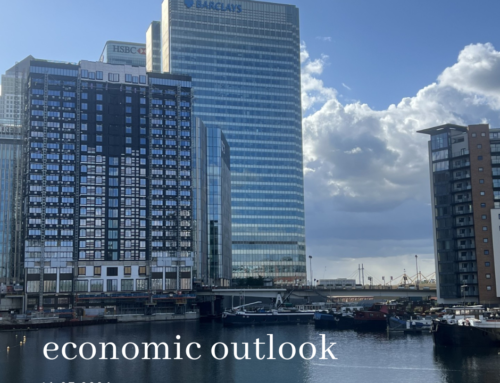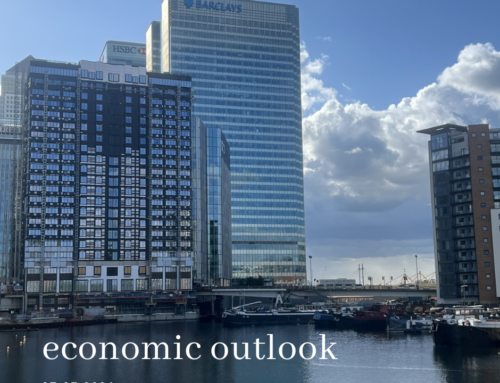US
Following the first monthly contraction in five months in December, existing home sales rebounded 3.3% in January to a 5.69 million-unit rate, reaching the highest level in the post-recession period. Single-family sales rose 2.6% from an upwardly revised December print, and condos/co-ops grew 8.3% during the month. The jump in sales activity in January is consistent with the surge in mortgage purchase applications in November, as would-be buyers rushed to lock-in rates following the election. On average it takes about two months to close on a home, according to the Donald
Total housing inventory now sits at 1.69 million, which is down 7.1% from a year earlier. Given the historically low level of inventories, home prices remained firm in January, with the three-month moving average median home resale price up 6.0% year over year. Also released during the week, the FHFA home price index showed that prices grew 6.3% above year-ago levels.
Fed officials said in the latest FOMC meeting minutes that “it might be appropriate to raise the federal funds rate again fairly soon if incoming information on the labor market and inflation was in line with or stronger than their current expectations or if the risks of overshooting the committee’s maximum employment and inflation objectives increased”. Positive FOMC stance aside, comments from Fed’s Harker, Mester and Powell suggest that a March rate hike is on the table.
PCE core inflation for January is due to be released on Wednesday. PCE inflation has been quite flat at around 1.7% since August with no clear trend. PCE core is expected at 0.25% month-on-month and 1.7% year-on-year in January. However, given that CPI for January came out higher than expected, there may be upside risk to these estimates.
On Monday, capital goods orders data for January is due out. These figures will give a first impression of whether investments continue to gain momentum as seen during the second half of 2016. On Wednesday, ISM manufacturing for February is due out. The preliminary manufacturing PMI showed a small decline and the same may be true for ISM given that ISM has recently been a bit higher than PMI. However, regional PMIs have been quite strong.
President Trump is set to give a speech at a joint session in Congress. A few weeks ago, he promised that he would announce ”something phenomenal in terms of tax”, hence that he is likely to use this opportunity to reveal some of his thoughts on the topic.
Daniel Tarullo will step down as Fed Governor at the beginning of April. Besides Tarullo’s free seat from April, two other board positions are vacant at present. Furthermore, Lael Brainard is likely to announce her resignation in the foreseeable future. As an acknowledged supporter of Hillary Clinton in the presidential election campaign, she has no chance of succeeding Janet Yellen. Yellen‘s term of office as Board Chair ends in February 2018; Fischer’s as vice chair in June 2018. Donald Trump will not nominate Yellen or Fischer for a further four-year term of office and both are unlikely to stay as ordinary board members so two more board posts will become vacant in the next 15 months. President Trump has a chance to reshape the leadership of the Fed by appointing members who are sympathetic to his views in economic policy.
UK
The UK economy expanded 0.70% quarter-on-quarter in 4Q, quickening from the 0.60% quarter-on-quarter pace in 3Q thanks mostly to a pick up in exports activities. The nation’s finances was on firm footing, posting a surplus of 9.4 billion pounds in January, after a deficit of 4.7 billion in December. Other data was quite mixed. Retail sales figure indicated that household consumption slumped 0.30% month-on-month in January but manufacturing orders rose to the highest level in two years helped by a weaker Sterling.
Focus continues to be on the passing of the EU exit legislation, enabling the UK government to trigger Article 50. The bill is currently in the House of Lords and the so-called committee stage begins on Monday, where the Lords will discuss and vote on amendments. The Lords are not expected to delay the bill and the UK remains on track to trigger Article 50 by the end of March, perhaps at the EU summit in Malta on 9 and 10 March. If the Lords agree the amendments, the bill will go back to the House of Commons for approval and then back and forth between the two chambers until the wording is agreed upon.
PMI manufacturing (due out on Wednesday) usually follows the equivalent index from the euro area, which was 55.5 in February, so a slight fall from 55.9 in January is possible. As confidence and future business expectations are subdued in the service sector, PMI services (due on Friday) is expected to fall to 53.8 from 54.5, suggesting that growth slowed a bit at the beginning of 2017.
EU
Euro zone current account surplus was down by €5.4 billon to €31.0 billion in December amid the decline in investment income. With businesses picking up, employers from both manufacturing and services sectors were hiring at faster pace. Markit manufacturing PMI and services PMI surged to a six year high in February.
Monday kicks off with M3 money supply growth and private sector loan growth for January. Loans to households increased 2.0% in December, up from 1.9% in November while loans to non-financial corporations were up 2.3% in December from 2.1% in November. Loan growth to the private sector in January is expected to remain around the December levels.
On Tuesday, the HICP inflation figures for February are released. Headline inflation has picked up significantly between November 16 and January 17 where it has risen from 0.6% to 1.8% year-on-year. Headline inflation is expected to rise marginally and peak at 1.9% in February, before it will start declining. High-energy price inflation has been the driver behind the steep increase in headline inflation in recent months, but this effect should slowly wear off after February, causing headline inflation to decline.
China
Since October 2016, the Chinese authorities have tightened property policies in order to safeguard financial stability. Thereafter, housing markets in the big cities have started to cool down. Recent data illustrate that housing sales in the 30 biggest cities have fallen by almost 30% on a year-on-year basis, the lowest rate since mid-2014. In the meantime property prices have gradually lost momentum, led by the first-tier cities. Housing prices in the first-tier cities were flat, and gained 0.2% month-on-month and 0.3% in the second and third-tier cities respectively in January 2017, clearly exhibiting a weakening trend.
The new round of PMI data for February is due to be released on Wednesday. It will give more info on whether the Chinese manufacturing cycle is peaking as some indicators have suggested recently. The cycle is expected to slow down as the two main drivers behind the recovery – housing and infrastructure – are expected to grow more slowly in 2017 following tightening measures. This will lead to a gradual weakening of investment growth as signalled by investment plans. PMI manufacturing is expected to decline from 51.3 to 51.0 and the Caixin PMI manufacturing to fall from 51.0 to 50.7.
Sources: Commerzbank, Haendelsbank, Danske Bank, Hong-Leong Bank, Wells Fargo.


